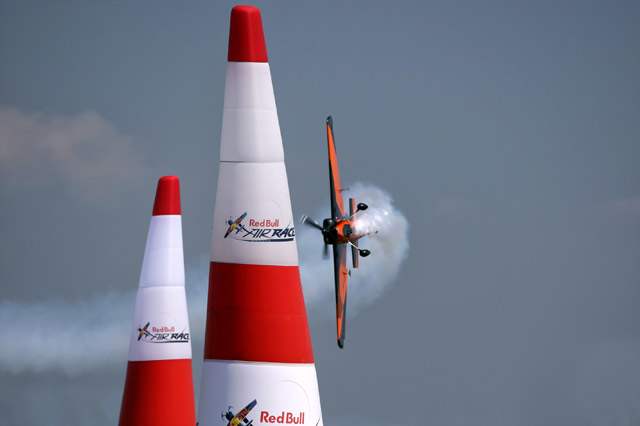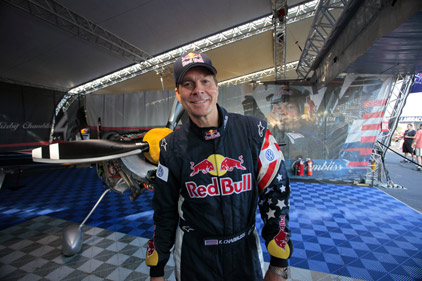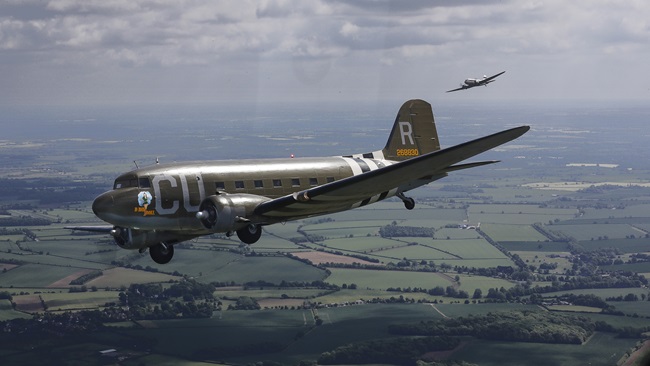Pilot Briefing: Red Bull on the move
Air races looking for a U.S. audience
Kirby Chambliss wants another win for the USA
By Julie Summers Walker

Since the competition’s inception in 2003, three American pilots have participated in the Red Bull Air Race World Championships: Kirby Chambliss of Arizona, Michael Goulian of Massachusetts, and Michael Mangold of Ohio. Mangold won the races in 2003 but no longer competes. Goulian won the races in 2009 and is an active participant. Chambliss won in 2004 and placed third in 2003, 2005, and 2008. In the 2015 races he is ranked fourth (as of press time).
 According to Red Bull, Chambliss is determined to win the races again. “I am starting to forget what that champagne smells like,” he has said. So Team Chambliss is making modifications to his Zivko Aeronautics Edge 540 aircraft. “It’s going to be a whole different raceplane,“ says Team Chambliss technician Jason Resop. “We’re going to cut it down and make it a lot slicker. It’s going to be pretty cool—a lot is going to change.”
According to Red Bull, Chambliss is determined to win the races again. “I am starting to forget what that champagne smells like,” he has said. So Team Chambliss is making modifications to his Zivko Aeronautics Edge 540 aircraft. “It’s going to be a whole different raceplane,“ says Team Chambliss technician Jason Resop. “We’re going to cut it down and make it a lot slicker. It’s going to be pretty cool—a lot is going to change.”
Some of those changes will appear on the aircraft in the final race of the season at the Las Vegas Motor Speedway, October 17 and 18. “It will be cool in Vegas, but there will be even more changes to come for the next season,” says Resop. “We’re ready to move on.”
The Red Bull Air Race World Championships in Las Vegas will be televised live by Fox Sports and on Red Bull TV online.
For more information, visit the website.
Aircraft
Wingspan: Less than 25 feet
Top speed: 265 mph
Track: 3.7 miles long
Three different gates
Single cone: Airplanes fly through at a 90-degree angle
Double cone: Airplanes in level flight
Chicane gate (three or four single pylons): Slalom flight
About the gates
• Gates are 82 feet high, spaced 49 feet apart
• Cone shape is 16 feetat the base, two and ahalf feet at top
What are the Air Races?
The Red Bull Air Race World Championshipbegan in 2003. It is a combination of high speed, low altitude, and extreme maneuverability, flown by some of the world’s best pilots. The specially designed aerial racetracks are defined by inflatable ripstop-nylon pylons, called air gates. Pilots try to fly the course in the fastest possible time, avoiding penalties. On race day, pilots fly head-to-head races until the winner takes the fastest time. Eight races were held in seven countries in 2015, featuring 14 Master pilots (there is also a Challenger class). The final race at the LasVegas Motor Speedway was scheduled forOctober 17 and 18.
ForeFlight now connected to Garmin data
Garmin opened its Bluetooth door to data for outside apps at EAA AirVenture 2015, and now the results are beginning to appear. ForeFlight Mobile has enabled two-way flight plan transfer between its app and Garmin GTN and GNS panel radios. There are additional benefits as well.
ForeFlight Mobile can now display subscription-free Automatic Dependent Surveillance-Broadcast weather and traffic information as well as GPS position from the Garmin units on iPads and iPhones. ForeFlight’s synthetic vision now has pitch and bank information that comes from Garmin’s data path, called Flight Stream 210.
ForeFlight Mobile customers who own a Flight Stream simply need to update their app at the iTunes store, and the new Garmin connectivity appears.
Now flight plans can be created on the home computer using ForeFlight Web, then transferred via the cloud to the iPad, and transferred again via Bluetooth into the Garmin panel-mounted radios. Changes made to flight plans on the panel are synced to the iPad or iPhone.
Procedure preview, a feature already found on ForeFlight Mobile, makescreating complex routes easier. For example, arrival and departure routes can be displayed graphically on the iPad. When one of the routes is assigned, it can be selected from displayed graphics in ForeFlight and that will be transferred instantly into the Garmin navigator’s flight plan.
Garmin also has cleared Jeppesen users to receive ADS-B data on the Mobile FlightDeck app. Jeppesen also connects via Flight Stream. —Alton K. Marsh
This month in aviation
Sponsored by Breitling
November
November 13, 1907. French inventor Paul Cornu flies the first helicopter 20 seconds in a one-foot hover.
November 22, 1909. The Wright Co. is incorporated.
November 23, 1910. Octave Chanute dies at age 78.
November 18, 1913. Lincoln Beachy flies his Curtiss biplane upside down and performs the first loop.
November 1918. Orville Wright writes, “The Aeroplane has made war so terrible that I do not believe any country will again care to start a war.”
November 21, 1921. Wesley May conducts the first midair refueling by carrying a five-gallon can of gasoline from his Lincoln Standard biplane to the wing of a Curtiss JN–4.
November 30, 1925. The Douglas Aircraft Co. is organized.
November 28-29, 1928. Cmdr. Richard E. Byrd leads the first flight over the South Pole.
November 19, 1932. The monument commemorating the Wright brothers’ first flight is dedicated in Kill Devil Hills, North Carolina.
November 22, 1935. Pan Am Airways flies the first Pacific airmail from San Francisco.
November 15, 1942. The first women report for Army Air Corps flight training in Texas.
November 20, 1953. A. Scott Crossfield reaches a speed ofMach 2.
November 3, 1957. Sputnik II is launched, carrying the dog Laika.
November 1, 1958. The FAA is established.
November 9, 1967. First Saturn V moon rocket launched.
November 11, 1982. Space Shuttle Columbia starts on its first mission.
November 10, 2005. Boeing’s Worldliner flies nonstop 12,586 miles from Hong Kong to London in 22 hours and 42 minutes.
November 30, 2013. Amazon announces plans for UAV deliveries.



